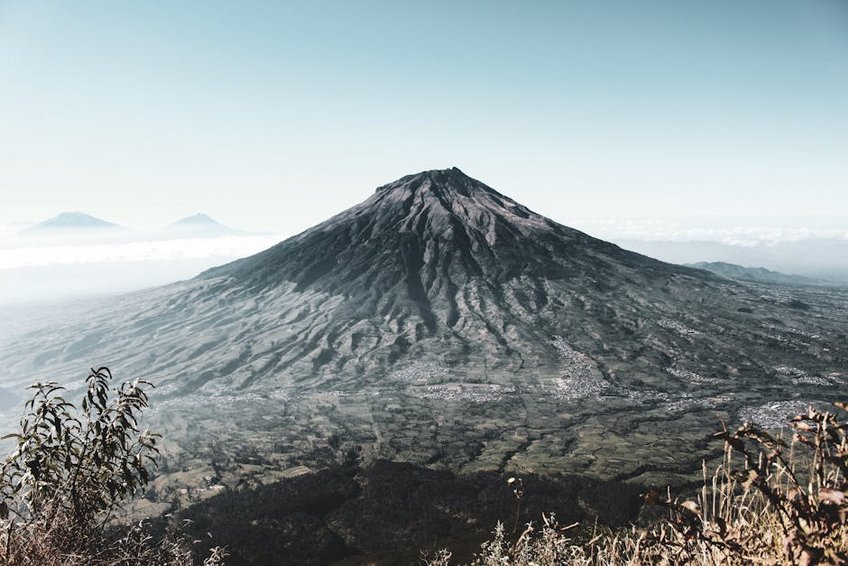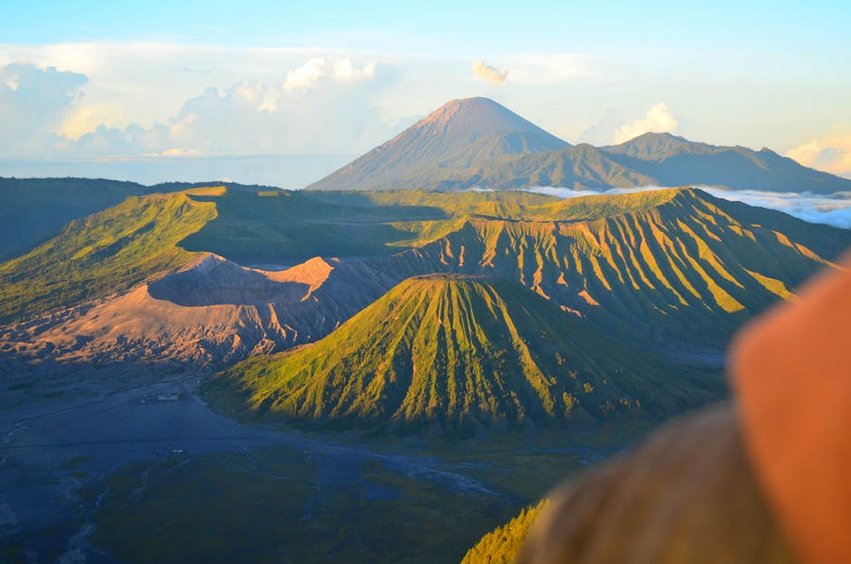Cameroon Mount Cameroon Volcano Trek
Trekking Mount Cameroon presents an extraordinary adventure scaling West Africa’s highest peak at 4,040 meters (13,255 feet) through constantly shifting ecosystems. Your Mount Cameroon volcano trek immerses you in active volcanic terrain where you’ll encounter everything from dense rainforests to lunar-like lava fields within a single ascent. This comprehensive guide details essential planning strategies, seasonal considerations, and local insights for a successful expedition.
Essential Mount Cameroon Information
Mount Cameroon, also called Fako or Mongo ma Ndemi, ranks as Africa’s most frequently active volcano with over eight recorded eruptions since 1900. The mountain’s unique positioning creates multiple microclimates where temperatures can swing from 25°C (77°F) at base to below freezing at summit. This dramatic elevation change supports incredible biodiversity across its slopes.
Local Bakweri communities consider the mountain sacred, with traditional beliefs attributing spiritual significance to its frequent steam vents and rumbles. British explorer Mary Kingsley made the first recorded ascent by a European woman in 1895, establishing its mountaineering legacy. Today, the trek attracts adventurers seeking both physical challenge and cultural immersion.
Key Volcano Facts
Understanding these fundamental details helps contextualize your expedition preparation.
- Mount Cameroon stands 4,040 meters (13,255 feet) tall with a base circumference of approximately 160 kilometers (100 miles) around its massive shield volcano structure.
- The mountain features two main climbing seasons: December-February offers drier conditions while June-September provides cooler temperatures but higher humidity levels.
- Local guides from Buea or Limbe provide essential navigation through constantly changing trail conditions and volcanic activity monitoring.
- Budget trekker: $400-600 covers basic guided tours, shared accommodations, and self-catered meals with rental gear and park fees included in this range.
- Mid-range adventurer: $800-1,200 provides private guides, comfortable lodgings, better equipment, and most meals with transport from Douala included at this level.
- Premium expedition: $1,500-2,500 includes luxury accommodations, expert guides, premium gear, all meals, and personalized support services throughout your climb.
- Cameroon Ministry of Tourism
- Lonely Planet Cameroon Travel Guide
- International Union for Conservation of Nature
Geographical Context
Located in Southwest Cameroon, the volcano dominates the landscape just inland from the Atlantic Ocean’s Gulf of Guinea. The mountain’s proximity to the coast creates unique weather patterns where ocean moisture frequently collides with volcanic uplifts. These conditions produce rapidly changing visibility and precipitation throughout ascents.
Several established routes approach the summit with varying difficulty levels and duration requirements. The Guinness Trail remains most popular while the Buea Route offers more gradual elevation gain. Each path presents distinct challenges including rock scrambles, ash slopes, and potentially technical sections during wet conditions.
Volcanic Activity Considerations
Mount Cameroon’s status as an active volcano necessitates specific safety preparations and itinerary flexibility. The mountain typically exhibits minor seismic activity with occasional gas emissions from its summit craters. Local authorities monitor these conditions closely through the Institute for Geological and Mining Research.
While major eruptions remain infrequent, trekkers should understand evacuation procedures and emergency contact information. Guides carry communication devices and receive regular updates about volcanic conditions. This professional oversight ensures reasonable safety margins for properly prepared expeditions.

Alt: “mount-cameroon-volcano-summit-view-tropical-landscape”
Planning Your Mount Cameroon Volcano Trek
Successful Mount Cameroon ascents require meticulous preparation across physical conditioning, gear selection, and logistical arrangements. The mountain’s extreme elevation gain and variable weather demand respect through comprehensive planning. Budgeting adequately for guides, permits, and equipment ensures a safer, more enjoyable experience.
International visitors typically fly into Douala International Airport (DLA), Cameroon’s primary international gateway located approximately 70 kilometers (43 miles) from the trek’s starting point in Buea. From Douala, shared taxis or private transfers reach Buea in 2-3 hours depending on traffic conditions. Alternatively, Yaoundé Nsimalen International Airport (NSI) offers another entry option with longer transfer times.
Visa requirements vary by nationality with many Western passport holders eligible for 90-day tourist visas upon arrival. Always verify current entry regulations through Cameroon’s diplomatic missions before travel. Comprehensive travel insurance with emergency evacuation coverage remains mandatory for this remote adventure activity.
Best Time to Visit Mount Cameroon
December through February represents the prime climbing window with reduced rainfall and clearer summit views averaging 15-25°C (59-77°F) at lower elevations. These drier conditions make trail navigation more straightforward while minimizing leech encounters in forest sections. However, this peak season sees higher visitor numbers requiring earlier guide bookings.
June to September offers viable climbing conditions with cooler temperatures of 10-20°C (50-68°F) but increased humidity and afternoon cloud cover. Shoulder months like March and November provide reasonable compromise options with moderate crowds. Avoid April-May and October when heavy rains make trails dangerously slippery.
Budget Planning and Costs
Consider these three primary budget categories when calculating total expedition expenses.
Essential Preparation Checklist
Physical conditioning should emphasize cardiovascular endurance through hiking with weighted packs and stair climbing exercises. Aim for 2-3 months of preparation including back-to-back training days to simulate multi-day trekking demands. Altitude acclimatization remains crucial given the rapid elevation gain.
Technical gear requirements include waterproof hiking boots, layered clothing systems, headlamps, and emergency supplies. Documentation needs encompass passport copies, vaccination records, and emergency contact information. Book guides and accommodations 2-3 months ahead during peak season through reputable local operators.
Top Attractions and Trekking Experiences
Beyond the summit achievement itself, Mount Cameroon’s diverse ecosystems provide constantly changing scenery and wildlife encounters throughout your ascent. The mountain’s various vegetation zones transition dramatically from cultivated foothills through montane forests to subalpine grasslands. Each section offers unique photographic opportunities and natural wonders.
Wildlife sightings might include chimpanzees, drills, and numerous monkey species in forested sections alongside abundant birdlife like turacos and hornbills. The higher elevation zones host specialized plant species including giant lobelias and groundsels adapted to volcanic soils. These biological highlights complement the physical challenge of the climb.
Must-See Highlights
The Etinde (Little Mount Cameroon) subsidiary peak provides spectacular viewpoints approximately halfway through standard ascent routes. This volcanic cone offers panoramic vistas across the main crater and down to the coastal plains below. Morning light typically creates optimal photography conditions here before clouds develop.
Summit craters display fascinating volcanic features including fumaroles, lava fields, and occasional steam vents demonstrating the mountain’s active nature. The highest point features a small stone shelter and summit register where successful climbers record their achievements. Clear days reveal views stretching to neighboring countries.
Buea town serves as the primary base camp community with historical colonial architecture and vibrant local markets. The Limbe Wildlife Centre near the coast provides excellent primate viewing opportunities as either preparation or recovery activity. These cultural touchpoints enrich the overall expedition experience.
Hidden Gems and Local Favorites
The Bakingili fishing village on the mountain’s western flank offers authentic cultural interactions and stunning sunset views over the Atlantic. Local guides can arrange visits to traditional healers who utilize mountain plants in their practices. These experiences provide deeper cultural context beyond the physical climb.
Less-traveled trails like the Bomana Route feature spectacular waterfall sections and increased wildlife spotting opportunities. The Mondole Hills area presents excellent acclimatization hikes with magnificent views of the main peak. These alternatives reward adventurous trekkers seeking quieter routes.
Wildlife and Conservation
Mount Cameroon National Park protects crucial habitat for numerous endangered species alongside the volcanic landscape. Park rangers monitor wildlife populations and implement conservation programs benefiting local communities. Your trekking fees directly support these protection efforts.
Responsible trekking practices include staying on marked trails, proper waste disposal, and respecting wildlife viewing distances. Local guides emphasize minimal impact principles throughout the expedition. These measures help preserve the mountain’s fragile ecosystems for future generations.
Practical Travel Information
Cameroon’s transportation infrastructure varies significantly between urban centers and rural mountain areas. While main highways remain generally paved, mountain access roads often feature rough conditions requiring 4×4 vehicles. Understanding these logistical realities helps plan realistic itineraries and expectations.
Accommodation options range from basic guesthouses in Buea starting around $20 nightly to comfortable hotels in Douala costing $60-120. Mid-range lodges in Limbe provide excellent coastal locations with swimming pools and restaurant facilities. Booking platforms like Booking.com and Airbnb offer various options, though local operator recommendations often yield better value.
| Category | Options/Features | Price Range (USD) |
|---|---|---|
| Accommodation | Guesthouses in Buea, hotels in Douala/Limbe, mountain huts | $20-150 per night |
| Guided Tours | Local guides, park fees, equipment rental, porter services | $100-400 per person |
| Transportation | Shared taxis, private transfers, rental cars, domestic flights | $10-200 depending on route |
| Food & Supplies | Local restaurants, market purchases, bottled water, snacks | $15-40 per day |


